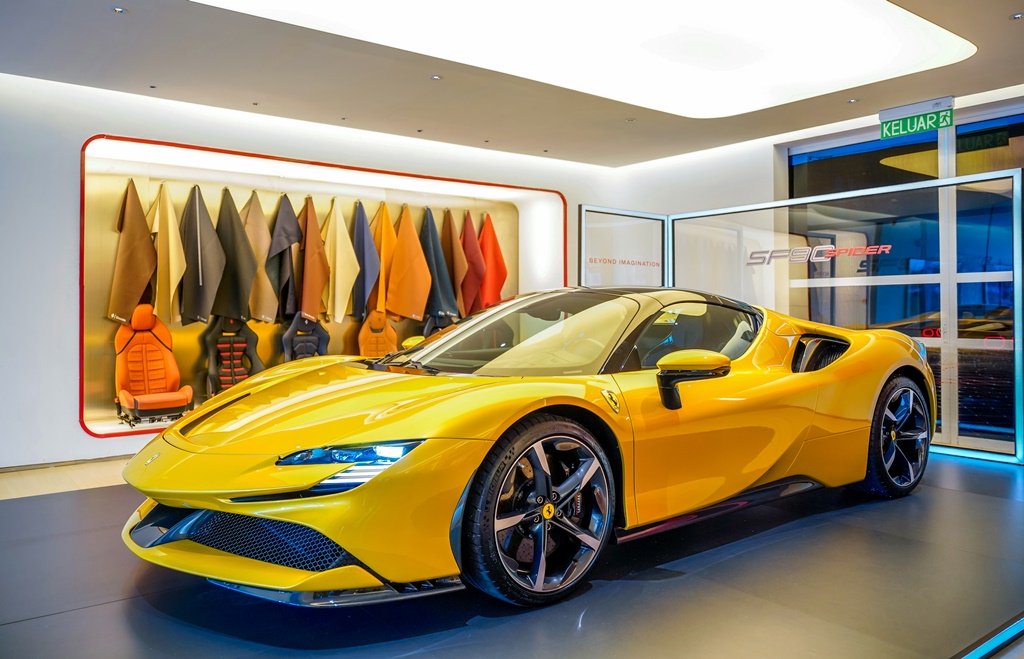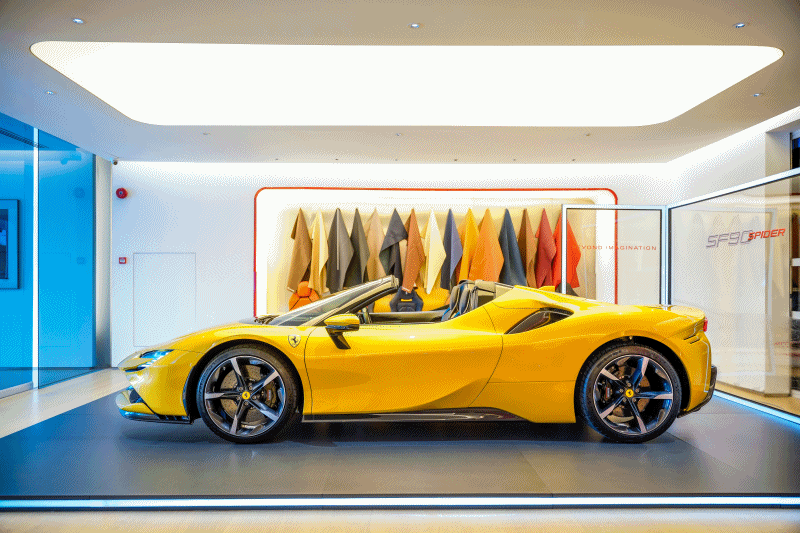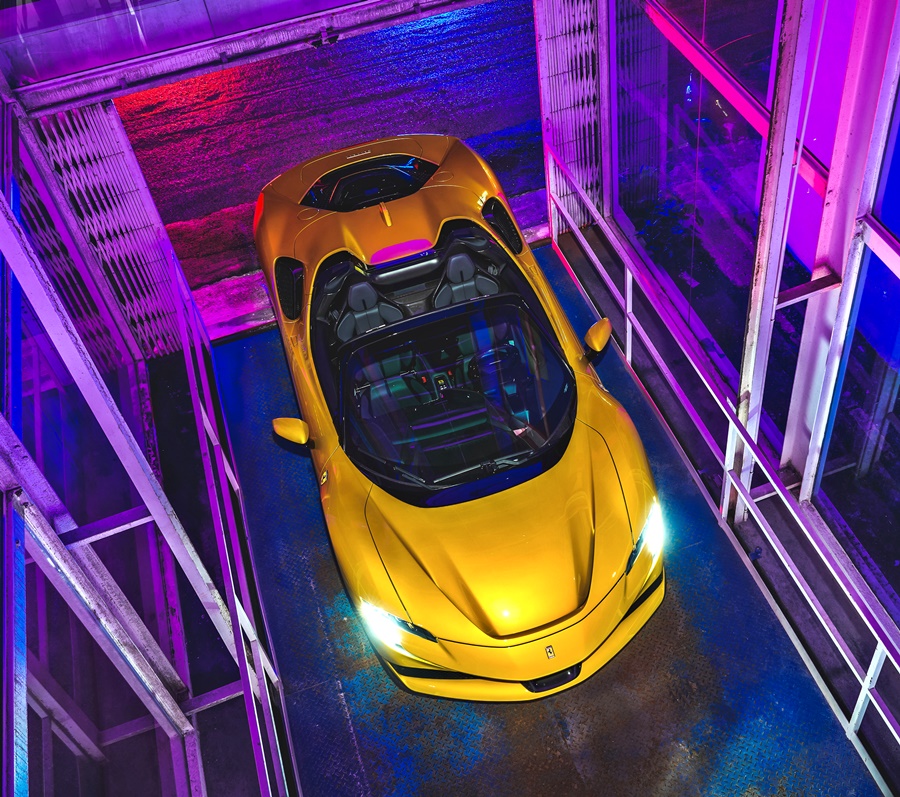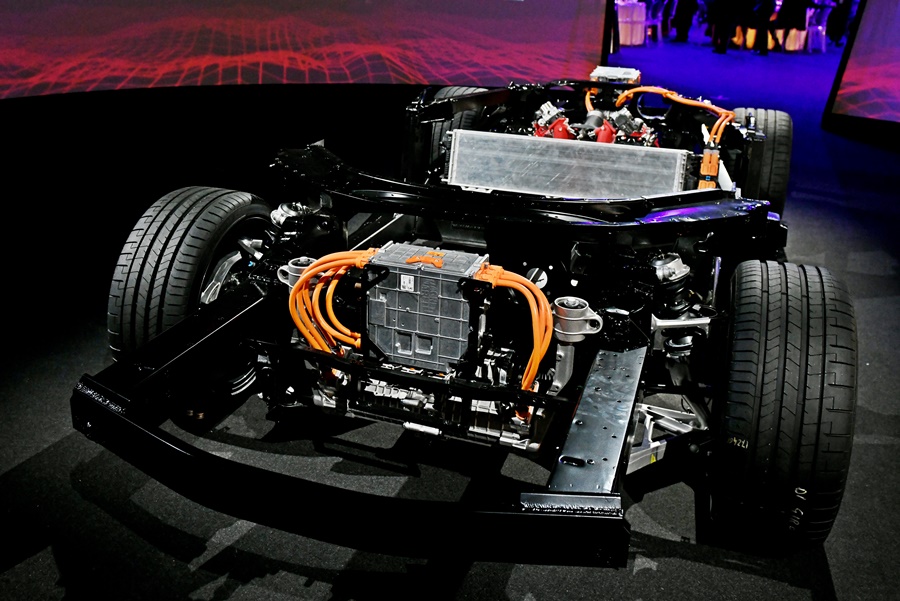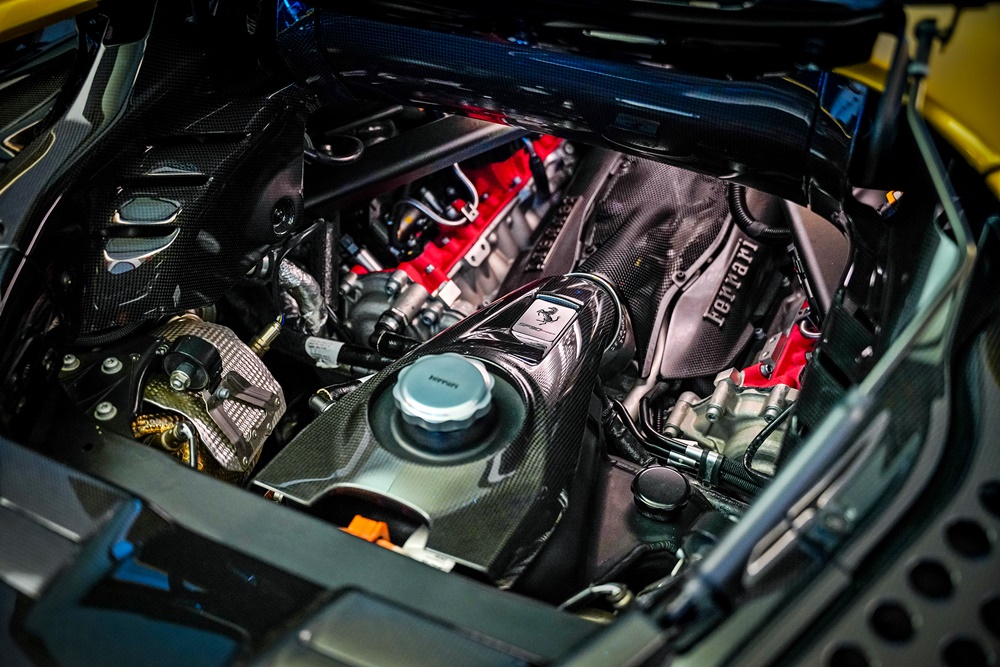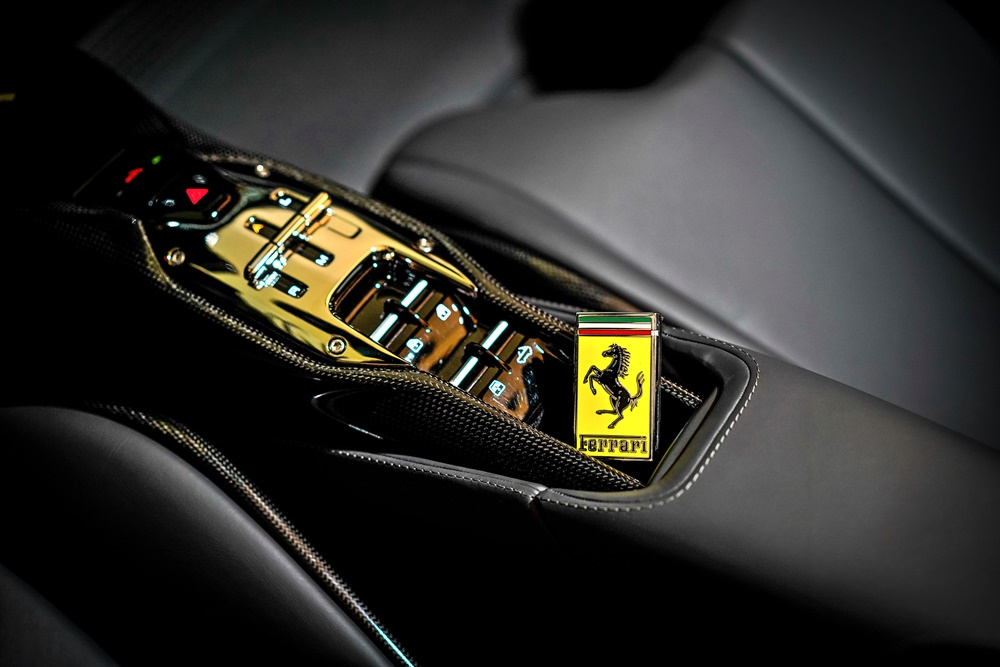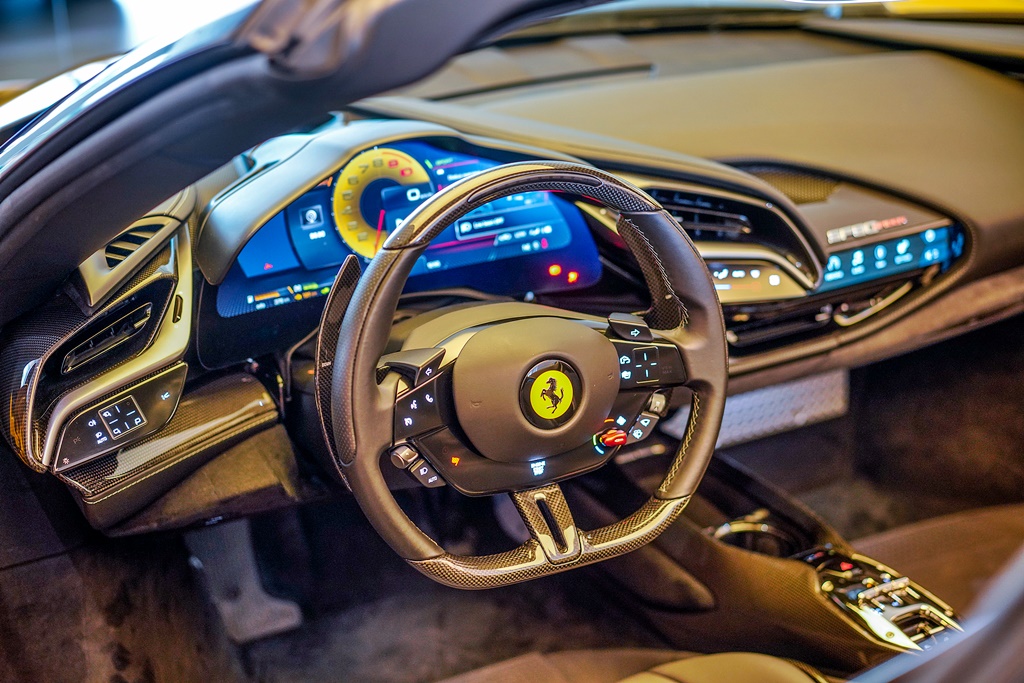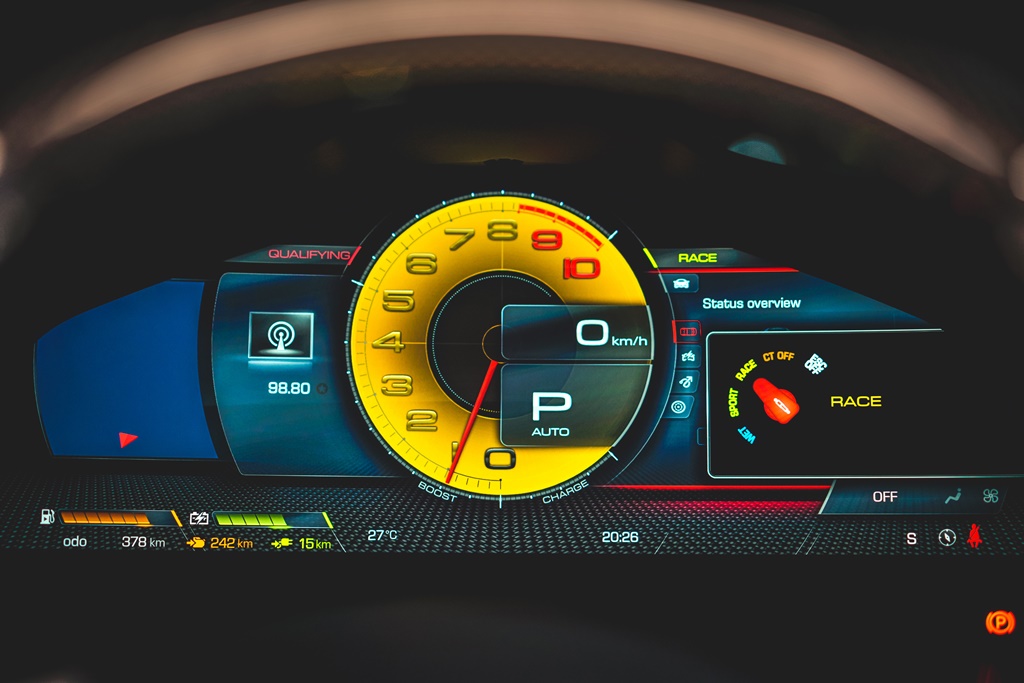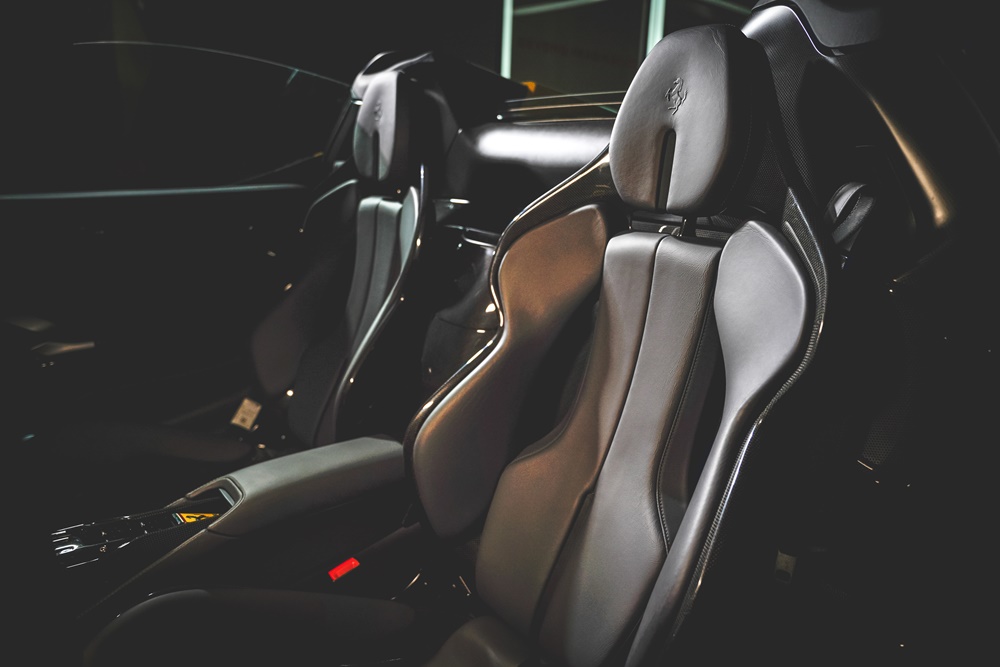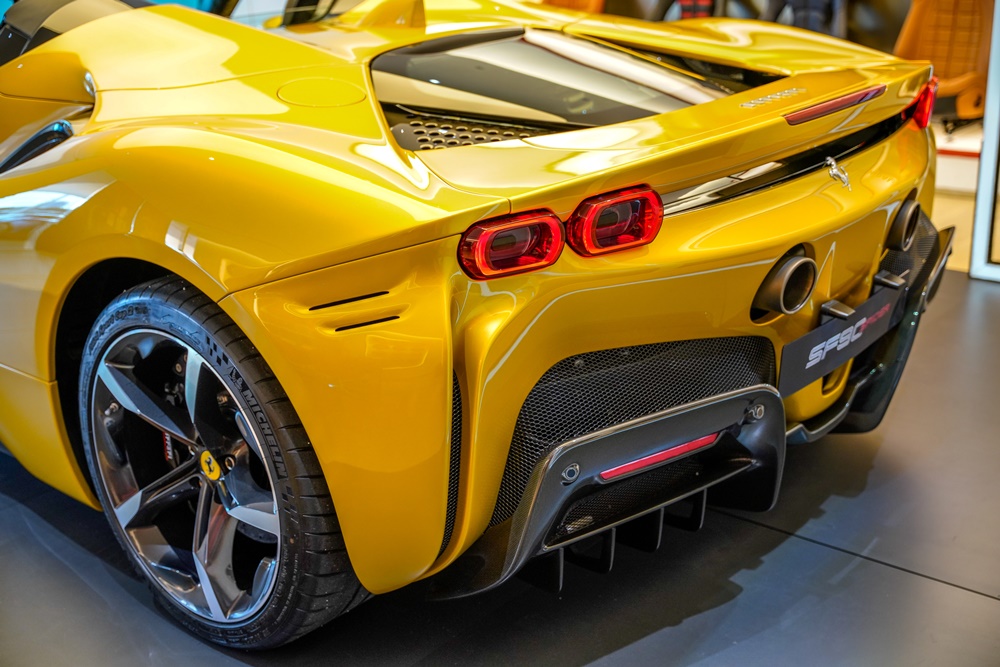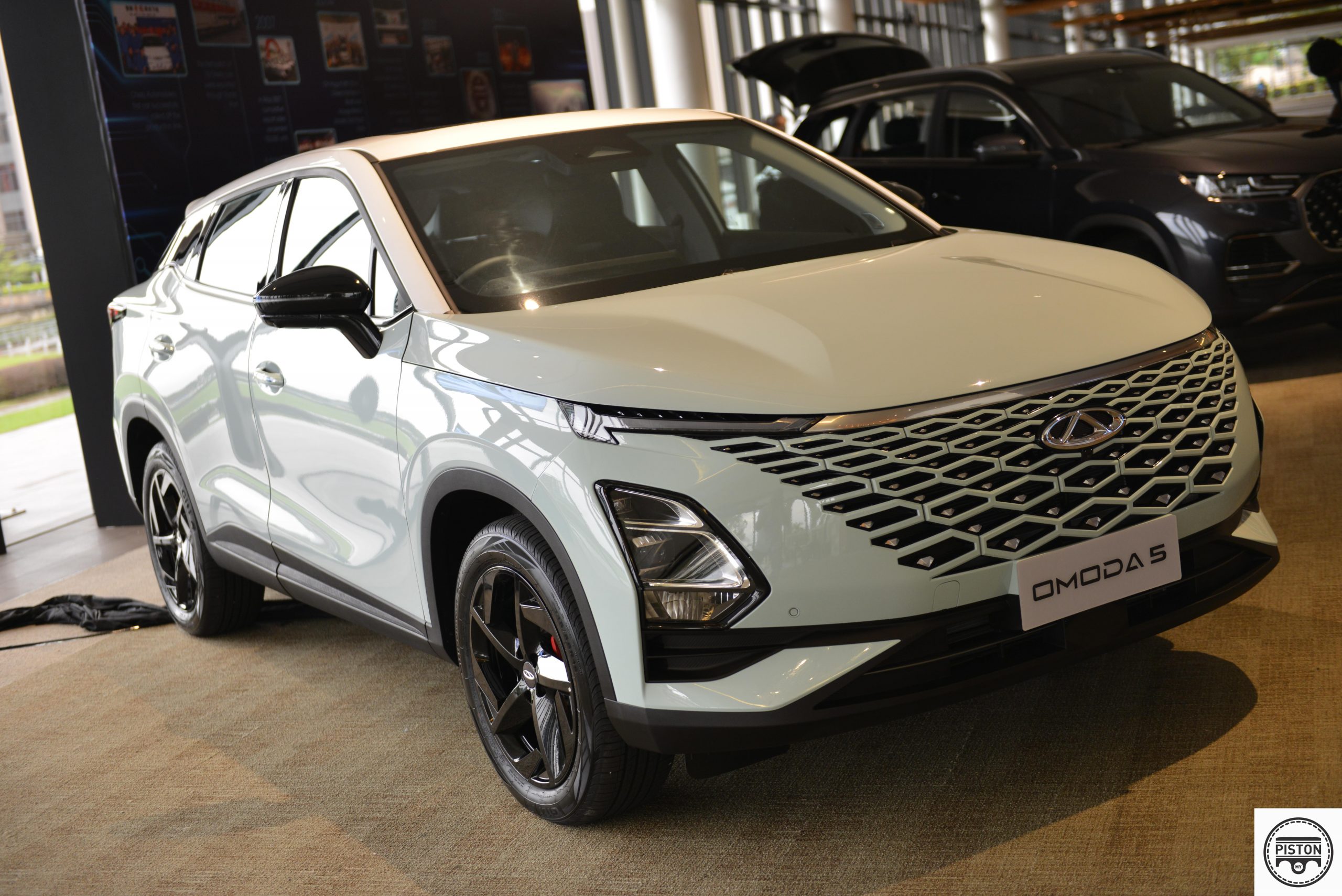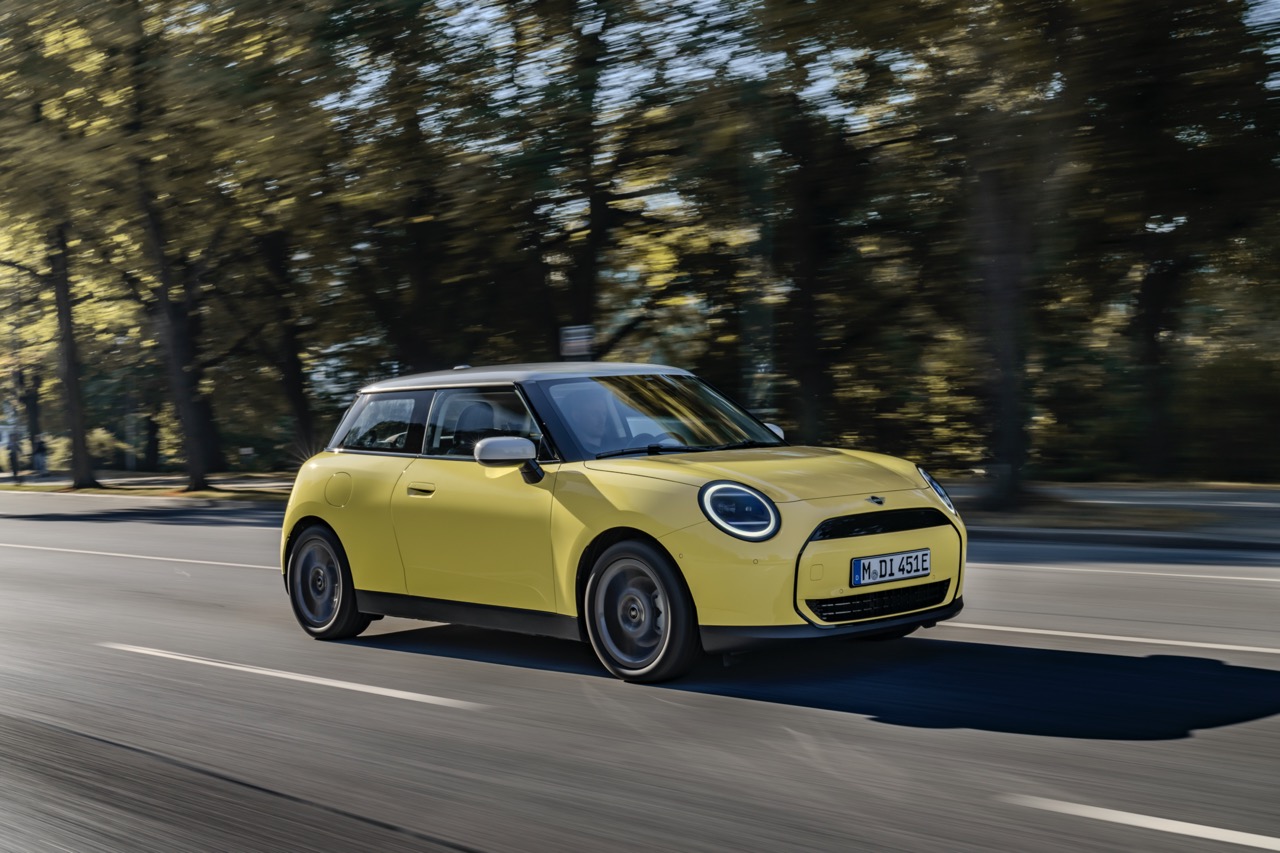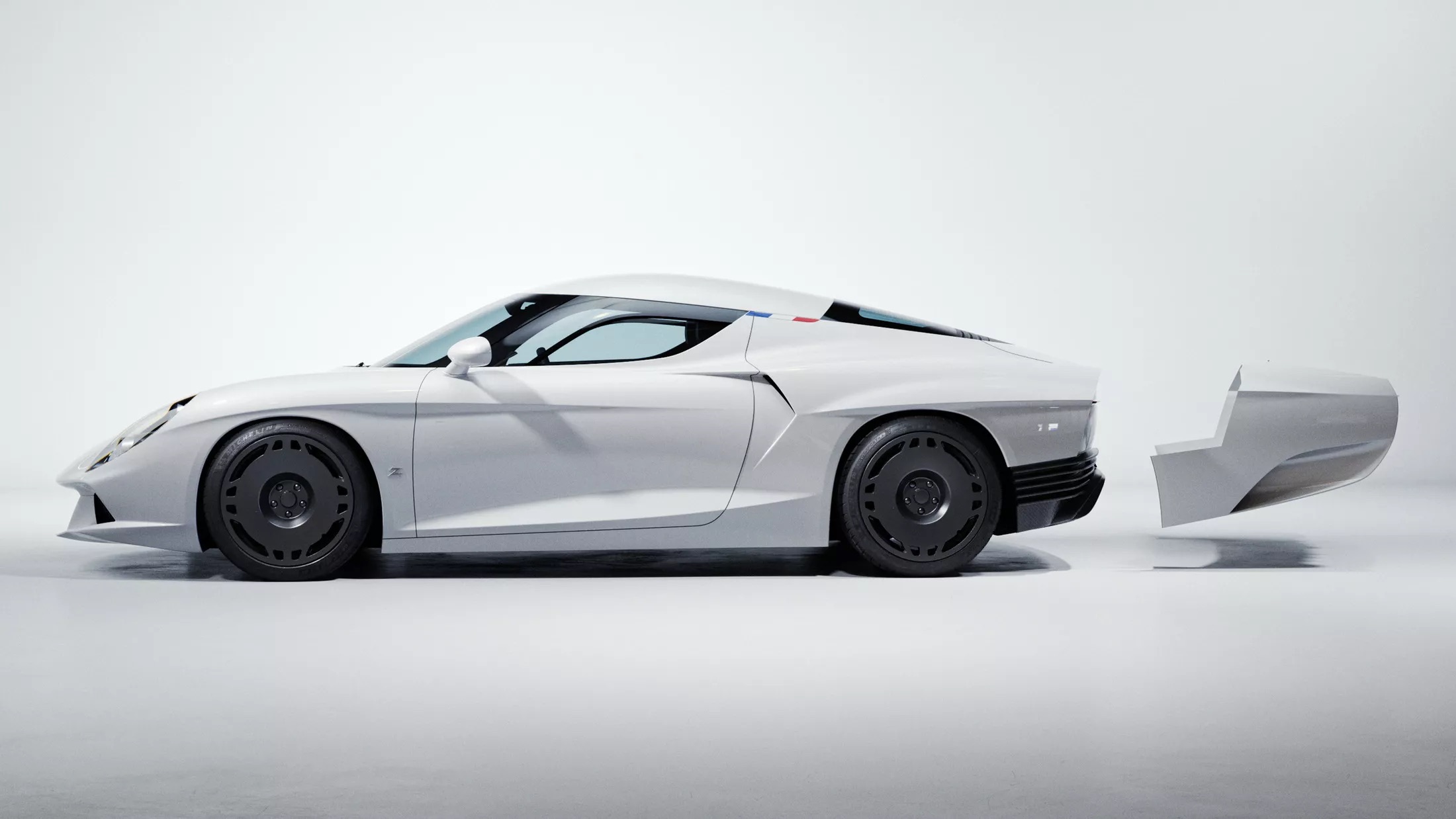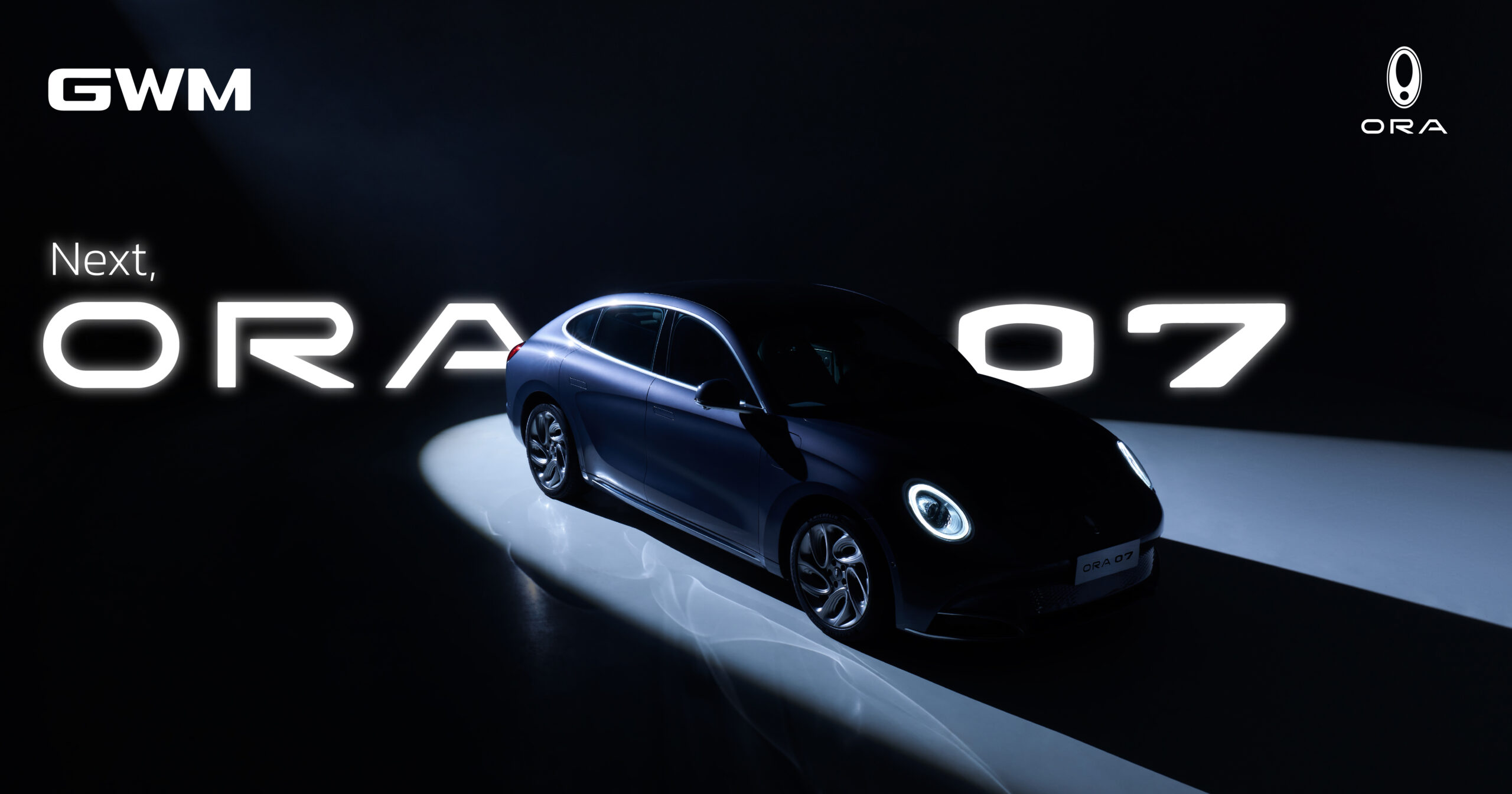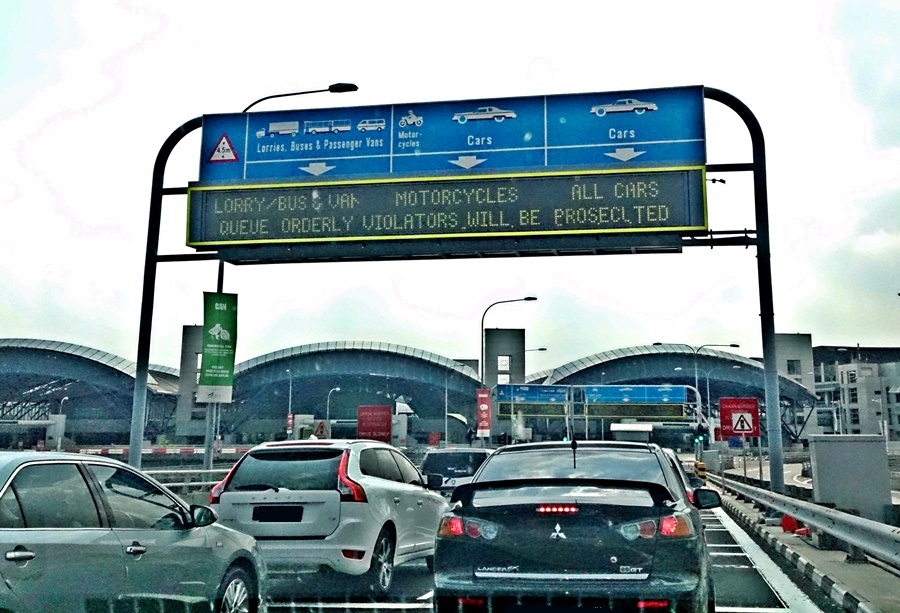Ferrari had prototypes of hybrid powertrains over 10 years ago and last year finally put a plug-in hybrid (PHEV) into production as the SF90 Stradale – the Italian carmaker’s first hybrid supercar. Together with the Stradale came the SF90 Spider, its first hybrid supercar with a retractable hard top (RHT) and this new model is now available in Malaysia from RM2,088,000 (excluding duties, taxes and insurance).
Simple and light RHT
The RHT is simple in design and can open or close within 14 seconds, with operation possible even when the car is on the move. The use of aluminium in its construction also means that it is around 40 kgs lighter than a conventional retractable hardtop while taking up less storage space. Its compactness requires just 100 litres of space, rather than the 150 – 200 litres required by a traditional system.
Ferrari guarantees optimal noise insulation and protection from the elements when the RHT is raised, and it will not deform at high speeds. An adjustable electric rear window also enhances occupant comfort, even when the RHT is lowered at higher speeds.
Hybrid architecture
In a first for a Ferrari production spider, the SF90 Spider has plug-in hybrid architecture in which the internal combustion engine is integrated with two electric motors at the front and one at the rear derived from and named after the MGUK (Motor Generator Unit, Kinetic) used in Ferrari’s F1 cars. The synergy between the turbocharged V8 petrol engine and the electric motors generates a maximum of 1,000 ps/900 Nm, more than any other V8 turbo engine ever built by Ferrari.
The hybrid architecture proved a challenge in terms of weight management. While the extra 270 kgs of the hybrid system was amply compensated for by the extra power delivered, extensive optimisation and weight reduction work was also required on the rest of the car to keep overall weight down to 1,670 kgs.
Just as the SF90 Stradale redefined the aerodynamic performance levels of the Ferrari range, the SF90 Spider is pushing the limits of the results delivered still further. The goals that drove the aerodynamic development of the car from the very earliest stages were maintaining the SF90 Stradale’s performance levels with the RHT deployed, minimising aerodynamic turbulence and noise with the RHT retracted, and optimising power flows. Up to 390 kgs of downforce can generated in cornering at 250 km/h (with the special Assetto Fiorano specification).
1,000 ps/900 Nm V8
The synergy between the turbocharged V8 petrol engine and the electric motors generates a maximum of 1,000 ps/900 Nm – 60 ps more than any other V8 turbo engine ever built by Ferrari. To deliver this output, Ferrari’s engineers completely redesigned the intake and exhaust systems. To improve internal fluid dynamics, the ducts are now all horizontally lined up at engine head height, the turbo charger assembly has been lowered, and the exhaust line is higher.
This rationalisation also produced both a lower centre of gravity and a reduction in overall weight thanks to the use of Inconel instead of steel for the exhaust manifold.
The 8-speed, oil-bath, dual-clutch gearbox used in the SF90 Stradale has been redesigned for the spider version. Despite the addition of an eighth gear and the need to transmit a maximum torque of 900 Nm (an increase of more than 20% on the current 7-speed), the gearbox’s overall weight is actually 10 kgs lower than its predecessor. The clutch’s performance is 35% higher than the 7-speed, transmitting up to 1,200 Nm in dynamic torque during gear shifts.
Much attention was given to sound quality when redesigning the exhaust system as the soundtrack is one of the pivotal factors in the exhilarating pleasure of driving a Ferrari. The introduction of a ‘hot tube system’, which transfers sound more directly to the cockpit, has produced fuller, richer harmonics across the entire frequency range, improving both in-car sound quality and intensity as revs rise compared to previous Ferrari V8s.
To make full use of the powertrain’s output, the engineers improved the vehicle dynamics systems to allow the driver to enjoy the maximum potential, and not just in terms of pure performance and lap times.
Digital instrumentation with HUD
The look and feel of the cabin was driven in large part by the complete redesign of the HMI (Human-Machine Interface). The instrumentation is now predominantly digital with all the screens going completely black when the car is not running. The central instrument cluster comprises a single 16-inch HD screen, complemented by a head-up display (HUD).
The steering wheel completes that transfer process from the competition world and also ushers in a new era by introducing a series of touch commands that allow the driver to control virtually every aspect of the car without ever taking the hands off the wheel.
The F1 bridge, a signature on the previous models, has now disappeared from the central tunnel and been replaced by a modern take on the gearshift gate, an iconic feature of Ferrari’s manual gearboxes. In the new gate, however, the gearshift grille is digital as befits an automatic transmission.
Assetto Fiorano upgrades
As with the SF90 Stradale, the SF90 Spider is also available with an additional specification option for owners that want to push its track car capability to the extreme. The Assetto Fiorano pack includes a list of exclusive upgrades that include Multimatic shock absorbers derived from the Ferrari’s GT racing experience and optimised for track use.


